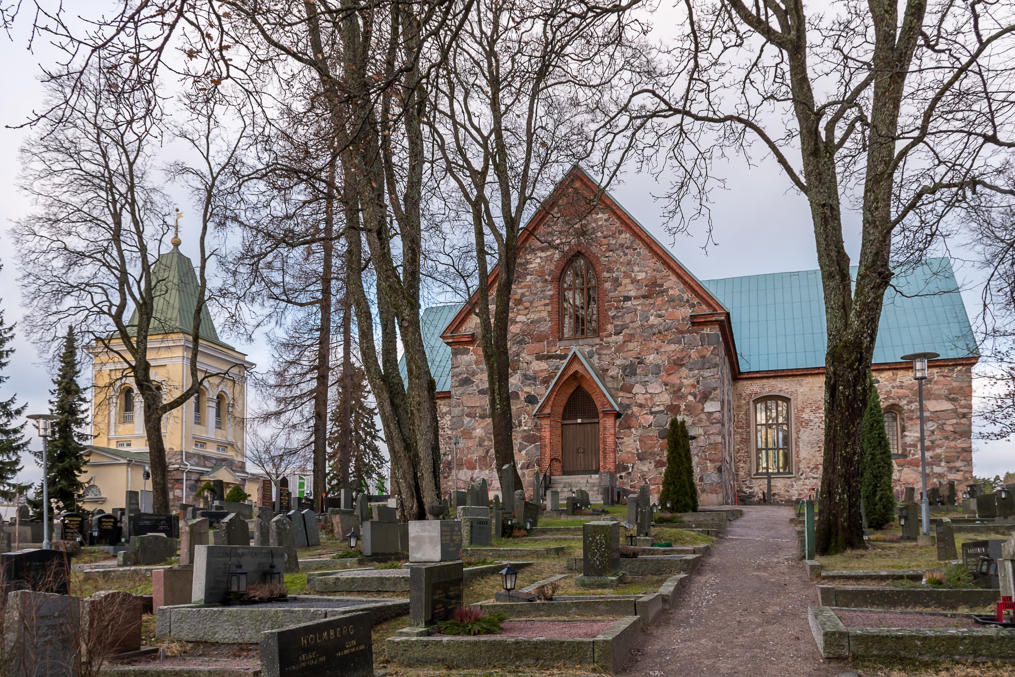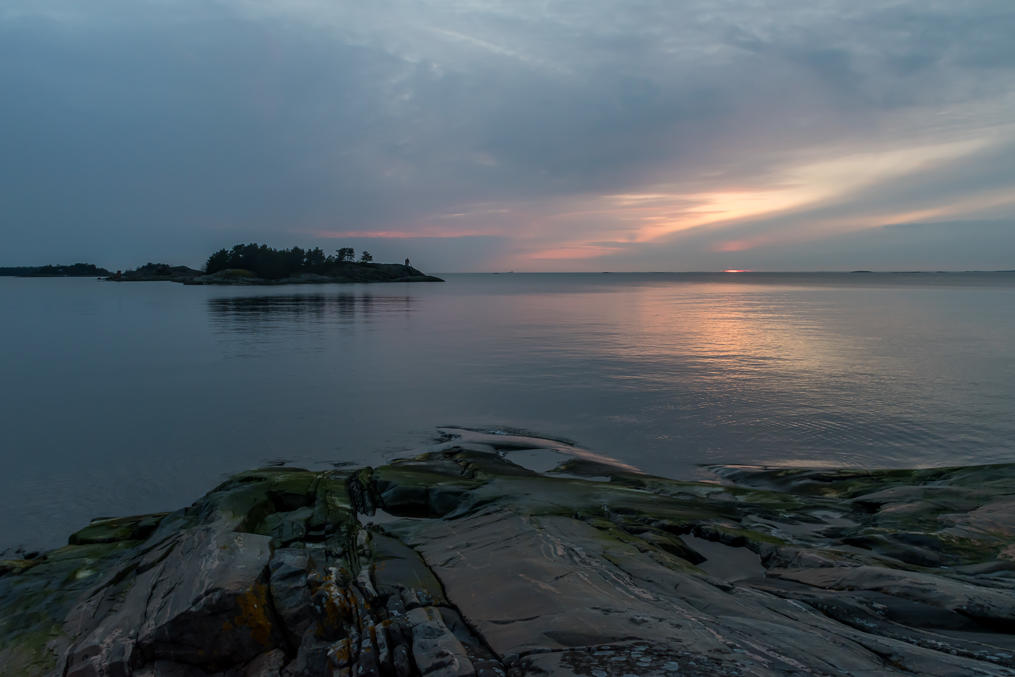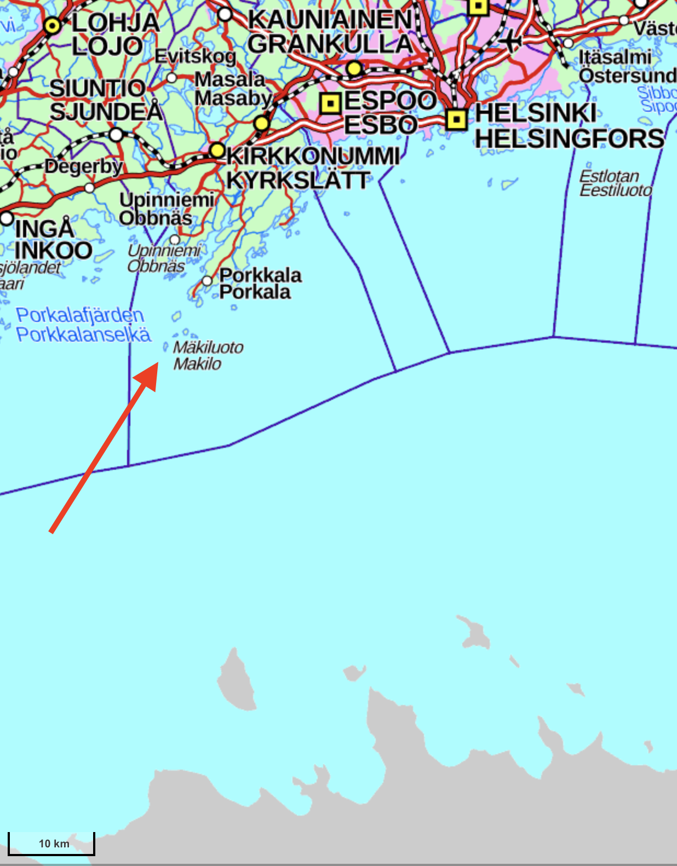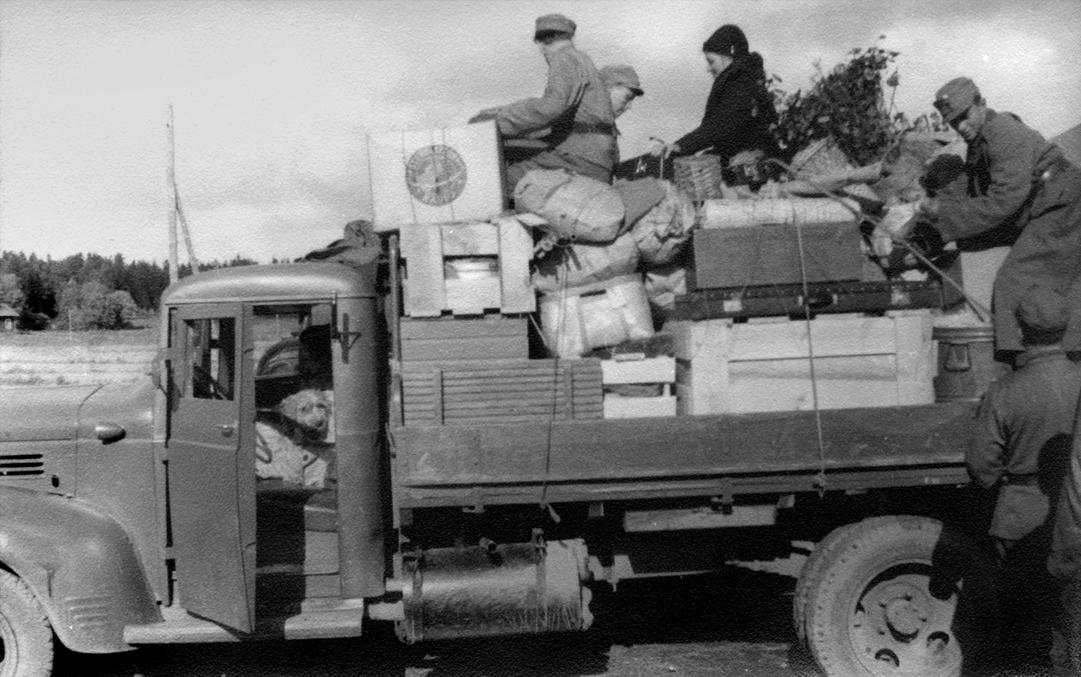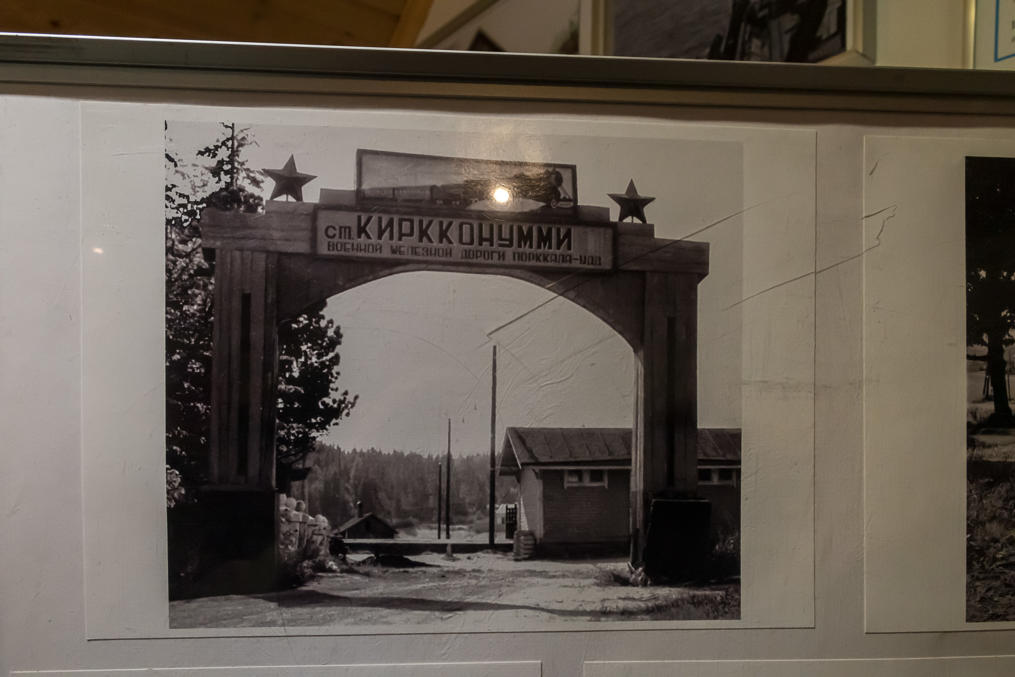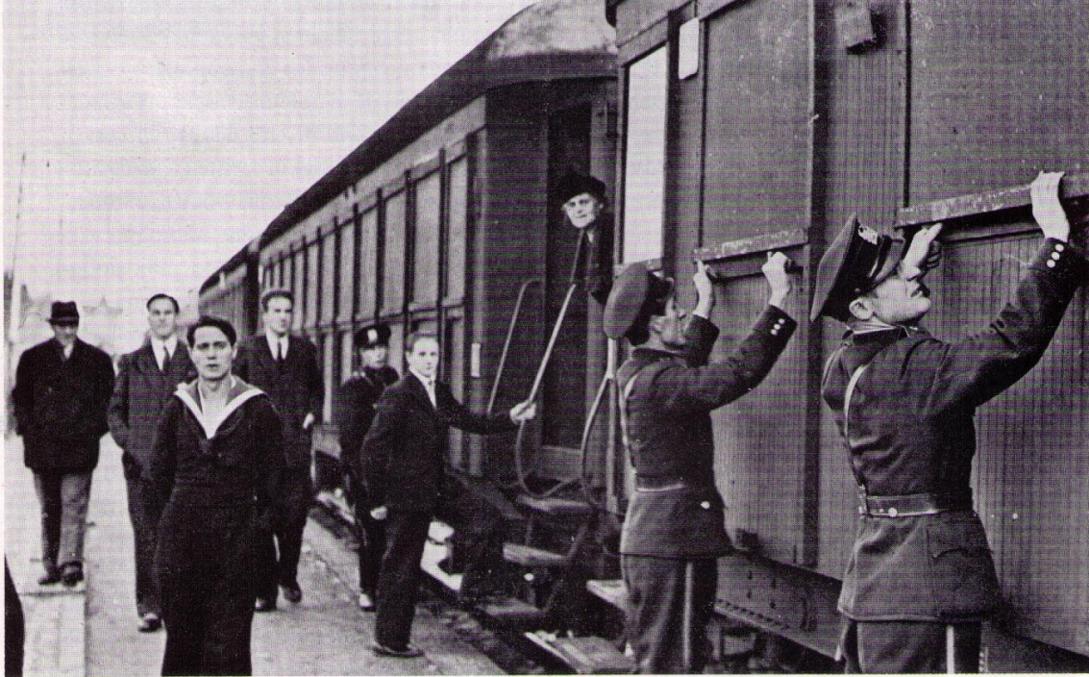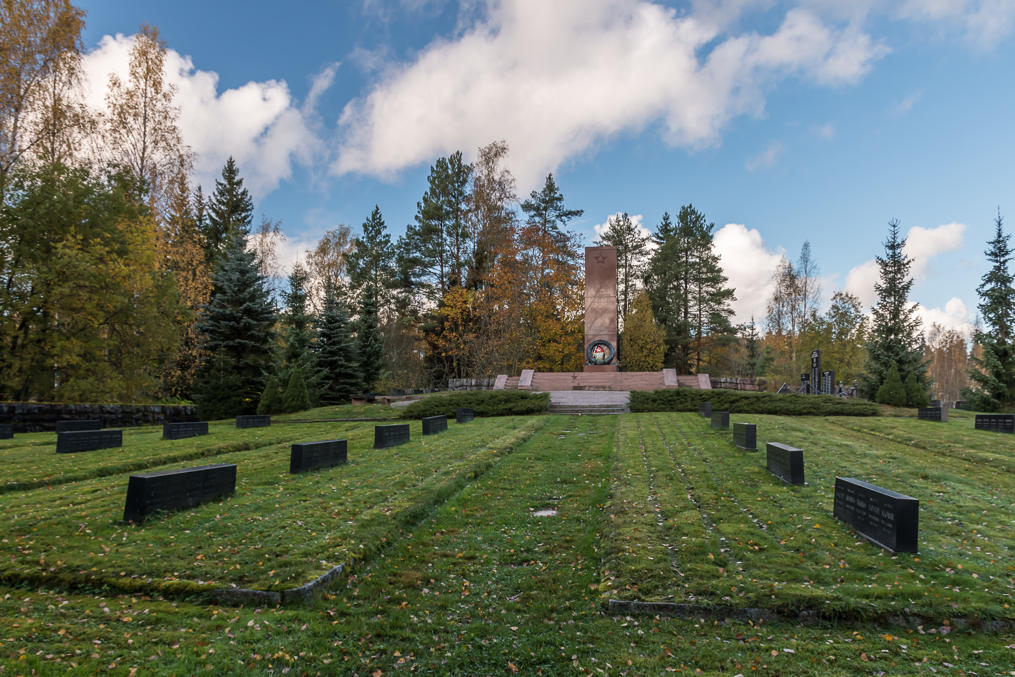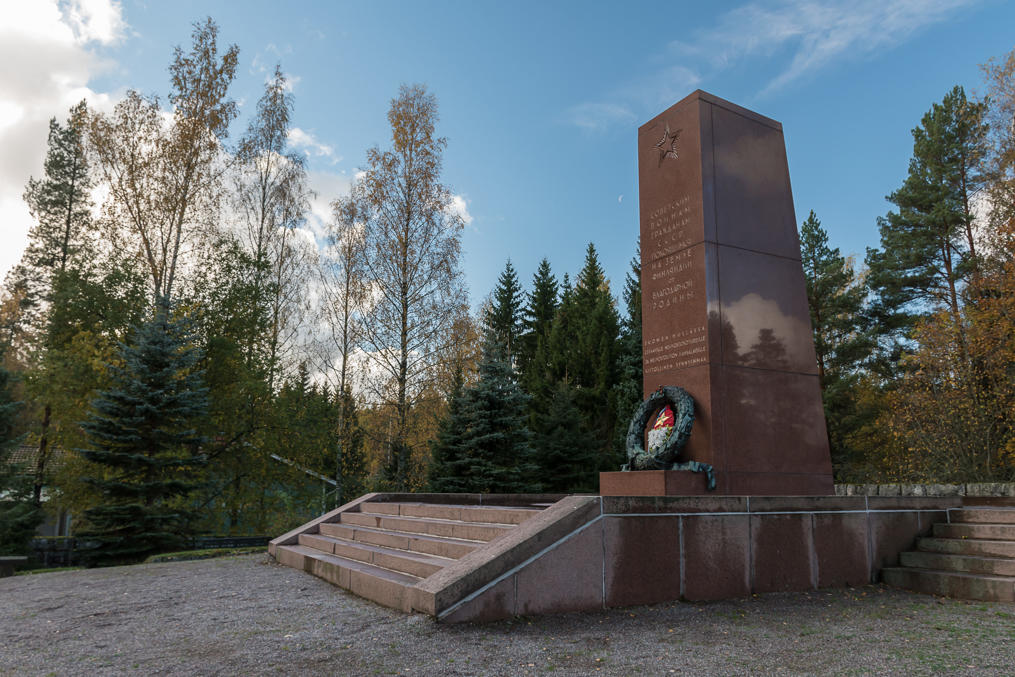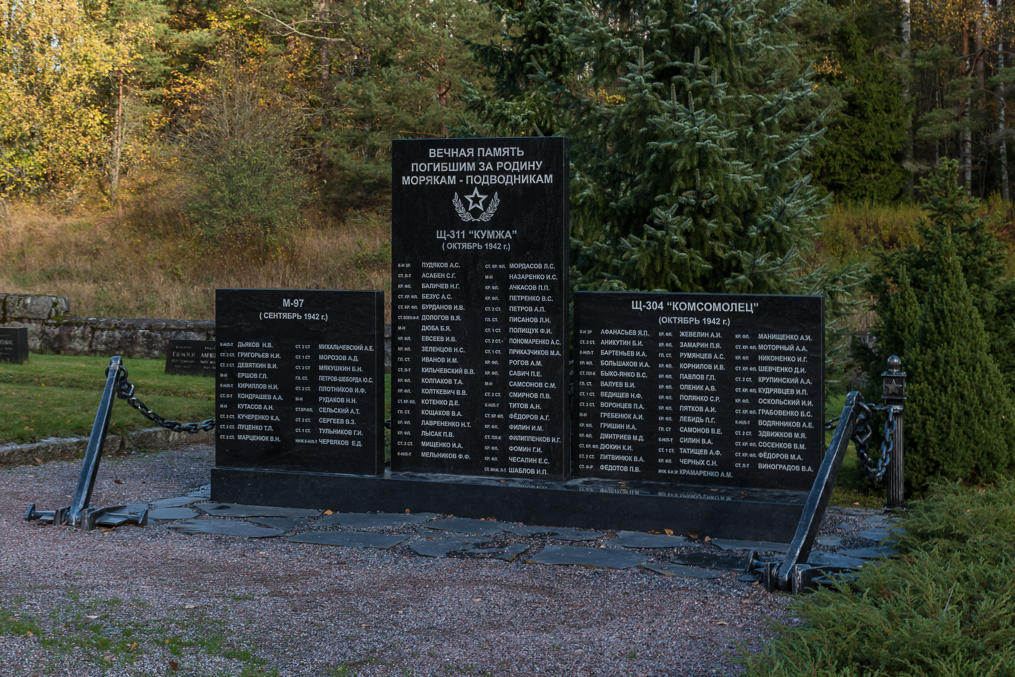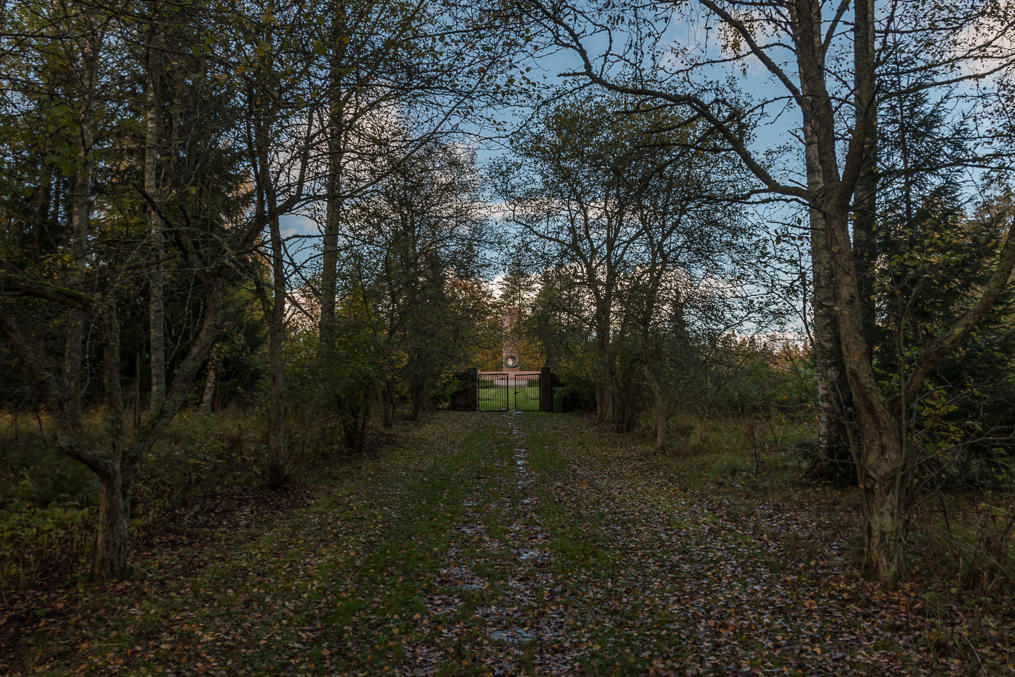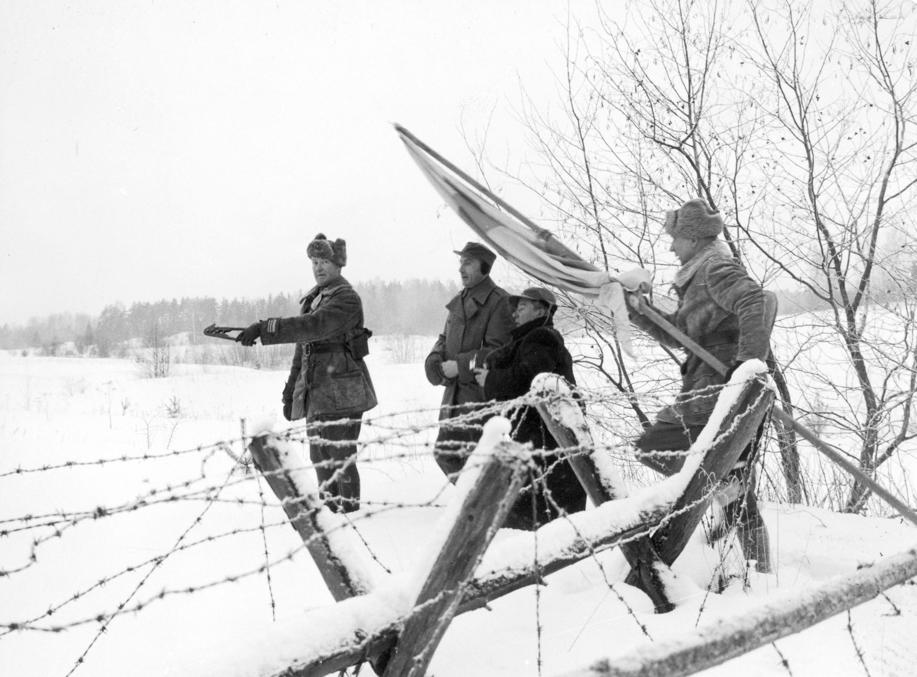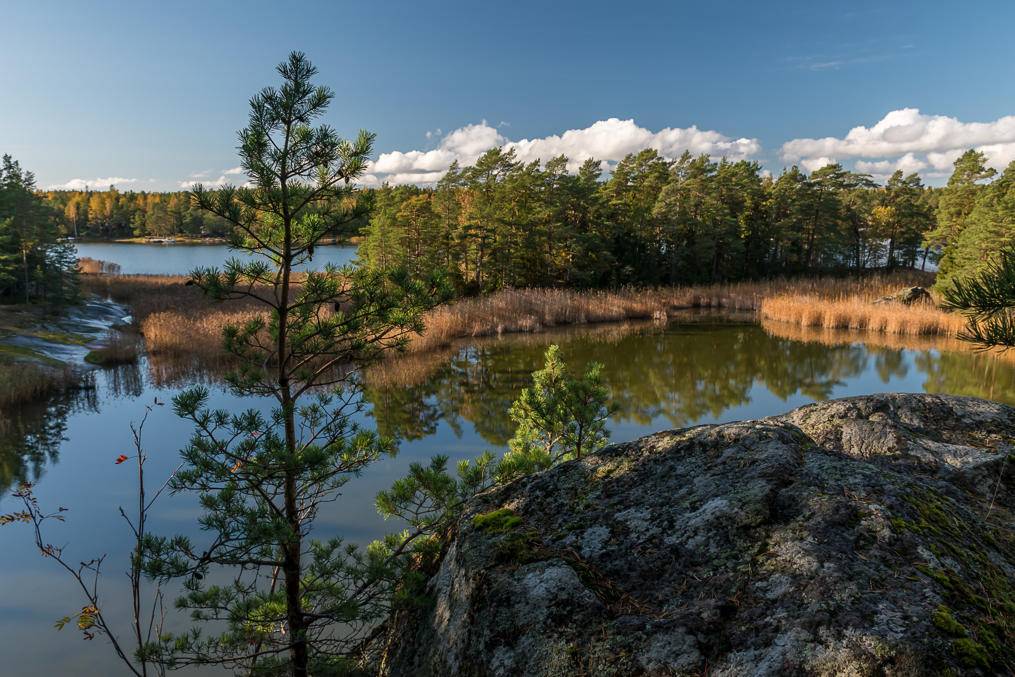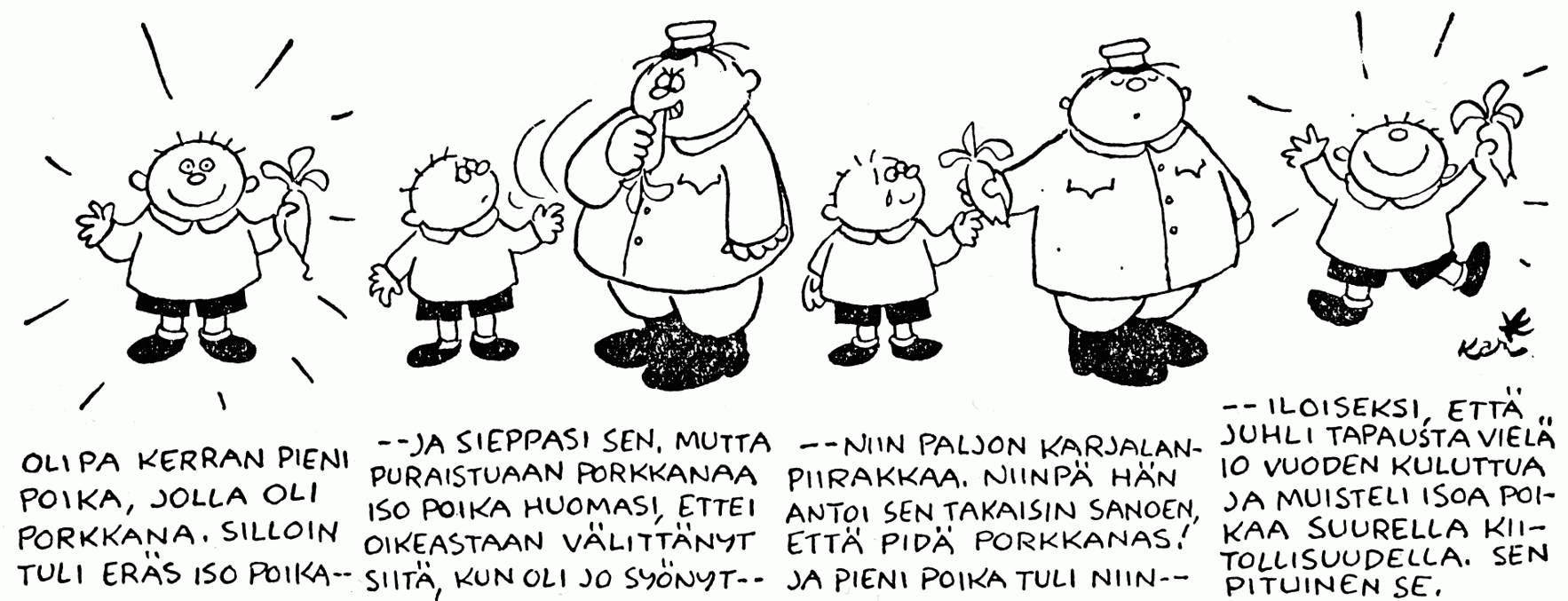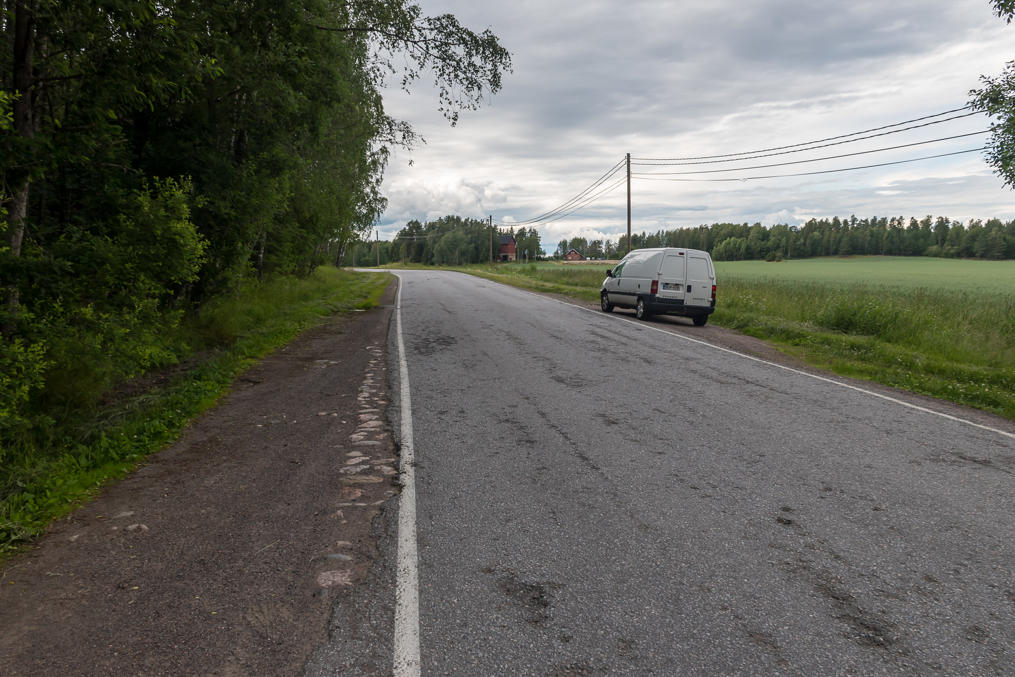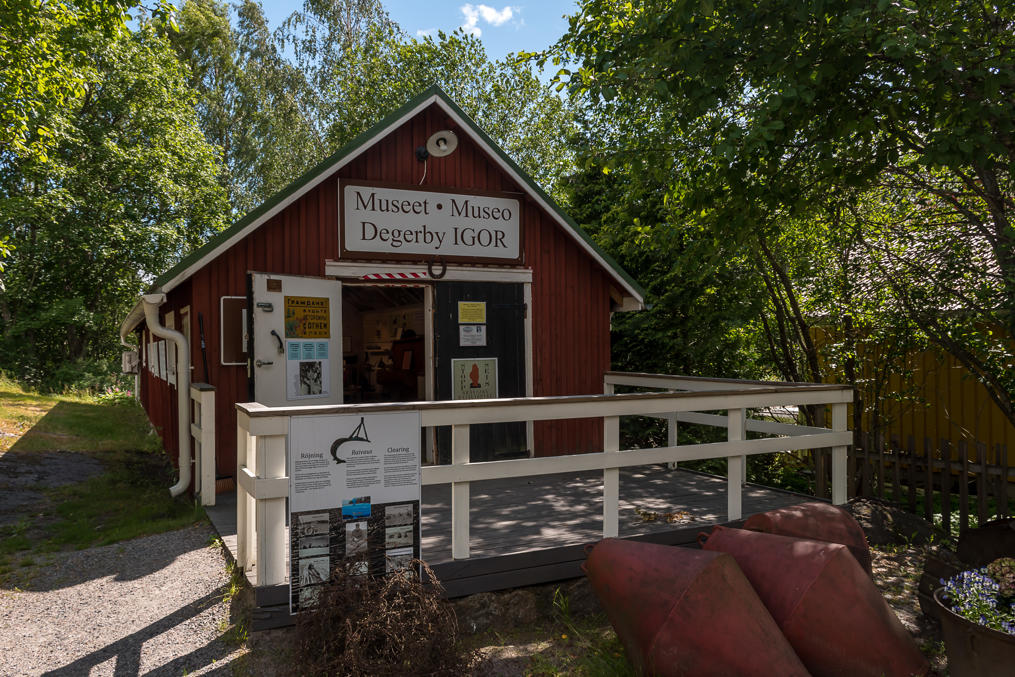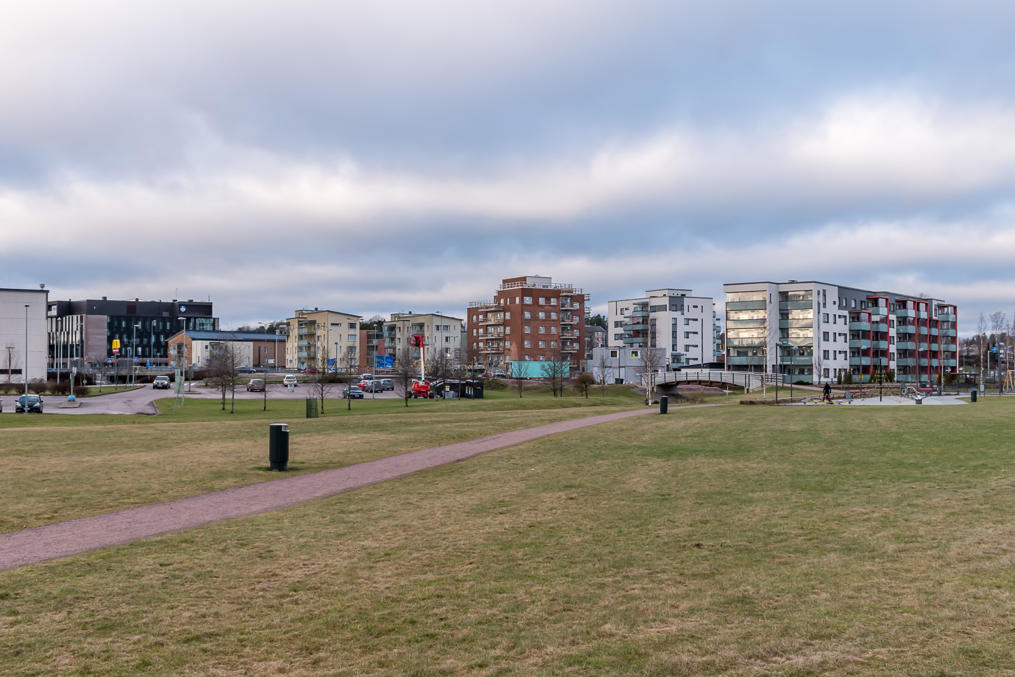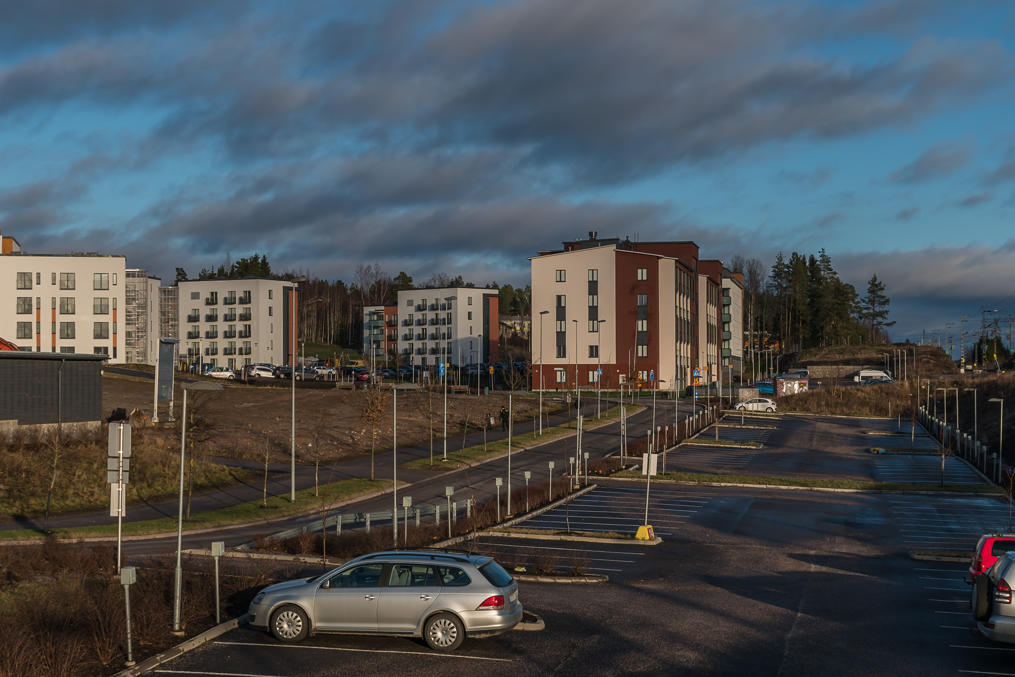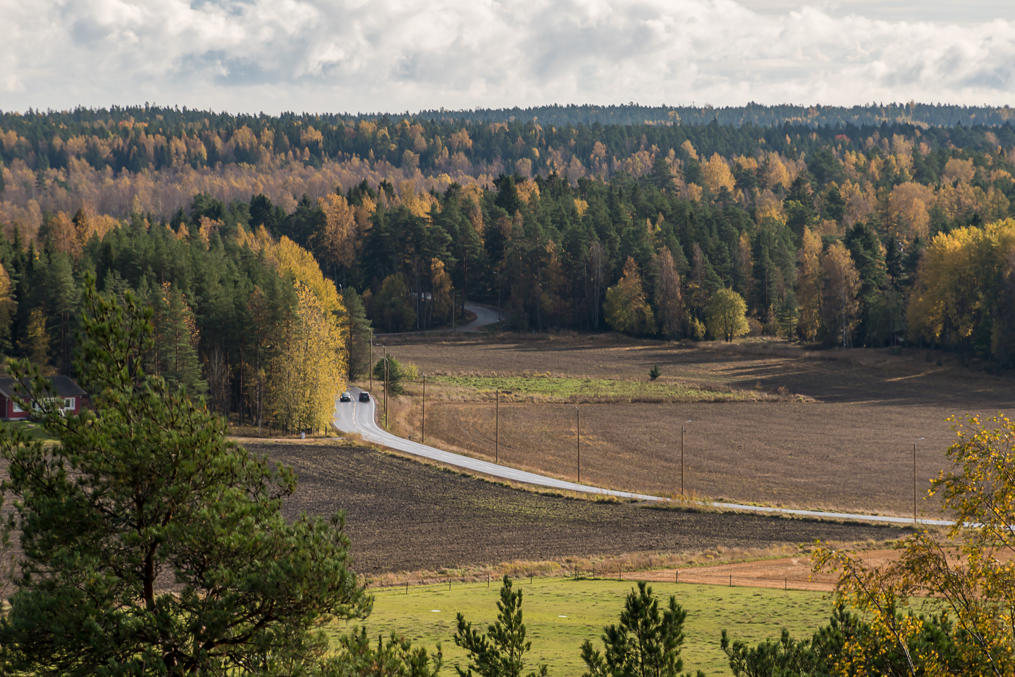Immediately after the end of the Continuation War (Finnish-Soviet war of 1941-1944, part of the World War II) the USSR imposed, among other almost overwhelming demands, one particular condition: the areas west of Helsinki, around Kirkkonummi, Porkkalanniemi, Upinniemi and the fortress island of Mäkiluoto, were to be emptied of all population and leased to the USSR for 50 years, for the purpose of establishing a Soviet naval base. Finland had no choice but to agree, despite the obvious threat to Helsinki and the need to evacute over 7 thousand additional people, along with hundreds of thousands others from the permanently lost Karelian territories. The base became known as Porkkala Udd in the USSR.
Although Finland fully expected that the USSR would hold on to this base until 1994 if not forever, the USSR managed to surprise it by returning it already in 1956, as geopolitical developments and high upkeep costs were apparently making the base rather impractical. Finland was faced with some dilemmas about what to do about the property of the previously resettled population, and decided to establish its own base in place of the former Soivet one. The population otherwise in the end returned to their houses, and nowadays Kirkkonummi especially became effectively a distant suburb of Helsinki, rapidly growing in last decades. Few traces remain of the period that the Finns call Porkkala parenthesis.
But let's start from the very beginning.
1. Our story begins with Kirkkonummi, a rural municipality to the west of Espoo, and Espoo is in turn just west of Helsinki. The municipality is also known as Kyrkslätt in Swedish; most of its original population dates from the Swedish colonists who came here in the Middle Ages, and the municipality had long been mostly Swedish-speaking. The namesake church (both Finnish and Swedish names mean "Church Moor"), built in the late 15th century but partially rebuilt since, is the only thing remaining here of the Middle Ages. Before the 20th century Kirkkonummi history wasn't especially remarkable. The old King's Road Turku-Vyborg passed by the church, and the Coast Railroad Helsinki-Turku joined it in 1903.
This was in fact originally meant to be a post about Kirkkonummi overall, but the Porkkala part far outgrew everything else, so I decided to split it out and write about the modern Kirkkonummi, the local nature and non-military history highlights on another occasion.
2. Porkkala, the double peninsula of Porkkalanniemi and Upinniemi (Porkkala udd and Obbnäs in Swedish), is the most notable geographical feature of Kirkkonummi, pushing deep into the Gulf of Finland to the southwest. It's been well known to seafarers since the Middle Ages. "Purkal" was mentioned already in the 13th century in the Danish itinerary of King Valdemar II the Victorious, detailing the route from Denmark into the then young city of Tallinn. Ships were supposed to sail around Sweden in view of the coast, via Åland archipelago and by the Finnish southern coast, and turn south from Porkkala, crossing the Gulf of Finland at this point. This was the safest place to do that, because the Gulf of Finland is narrow here; less than 50 km between Finnish and Estonian mainland, and 36 km between the outlying islands (Finnish Mäkiluoto and Estonian Naissaar). In good weather it was possible to sail across while never losing the sight of land. Such closeness of course had major geopolitical implications, which however were realized only much, much later in the 20th century. Pictured is the view from Porkkalanniemi.
3. The lighthouse of Rönnskär (Swed. Rowan Skerry) is the second oldest in Finland, built in 1800, which is also the evidence of the importance of the area. It is fairly well visible from Porkkalanniemi. About 20 people used to live on the rocky island in best of times. In 1920 a newer lighthouse, named Porkkala or Kallbådan lighthouse, was built on a smaller and more outlying island, and Rönnskär light was shut down in 1928, but the tower is still being maintained. Kallbådan in turn was shut down in 2015; smaller sector lights are now considered more practical.
4. The military history of Kirkkonummi and Porkkala in particular starts in the 20th century. The crucial part of the equation has always been a small but not overly small, 0.75 sq. km large, mostly bare outlying island of the local archipelago, named Mäkiluoto (Makilo in Swedish), which remains off-limits for visitors to this day. The name means "Hill Skerry" and is a pretty reasonable geographic name in itself, but local legends claim that the island was originally named after an individual named Mac Elliot, according to various tales either a Scottish sea captain whose ship wrecked at the island and he (with his family) were the only victims among the crew, or a preacher who was running away from the pagans from the south side of the Gulf of Finland, and was caught and killed by them at this island. No one knows if either of the stories have any shred of truth (the first one at least sounds less outlandish), but there used to exist a "Mac Elliot's grave" on the island. It was destroyed in 1838 and a new monument to the mythical Mac Elliot was built on the island in 1920.
The island was only ever used as a fishing camp until 1907, when the Russian Empire (which as we know included Finland and Estonia at the time) began to plan the Peter the Great's Naval Fortress, a massive system of fortifications and batteries along both Finnish and Estonian coasts and archipelagoes, meant to protect the empire's capital, St. Petersburg, from a possible naval assault. I mentioned it already for example in the Utö post; Utö was one small piece of the system, an outlying one. Mäkiluoto had however a much more central role in the plan: to be the northern pincer that could completely shut off the Gulf of Finland. Naissaar, a large Estonian island in front of Tallinn, would be the second pincer. There were only 36 km of the open sea between them, and the heavy guns of the time had a 25 km range. Therefore batteries at Mäkiluoto and Naissaar would form the main defense line, capable of shelling anything between them with their fearsome 356 mm turrets. They would of course be supported by other smaller batteries, including some on the mainland.
Of course like most great plans in the world this plan didn't quite work out in the end. Russia started building fortifications in 1913, but by the time the October Revolution came in the autumn of 1917, the construction was still very far from being finished, and in particular no 356 mm guns still were installed anywhere. Only a 203 mm battery was finished at Mäkiluoto. Finland declared independence afterwards, and in February 1918 during the Finnish Civil War the Whites of West Uusimaa, encircled on the mainland by the Reds (as in the early stages of war the Reds controlled most of the south of the country), attempted to capture Mäkiluoto from its still remaining Russian garrison, but were repelled (and some of them captured). Finnish Whites gained Mäkiluoto in the end in April with the help of German troops, but found it in ruins; the retreating Russian garrison blew up everything they had managed to build.
For a while Mäkiluoto became quiet again, visited mostly by smugglers; a prohibition law was in force in Finland in 1919-1932, and smuggling alcohol (pirtu, from "spirit") into Finland became a pretty lucrative activity. Eventually Finnish military turned their attention to the island again. To Finland itself Mäkiluoto was not quite as crucial as it had been to Russia; nonetheless since 1929 Finland and Estonia began in secret preparing joint plans for possible closure of the Gulf of Finland with artillery and minefields in case of a war with the Soviet Union, which was beginning to look like a potentially troublesome neighbor. By 1939 Mäkiluoto got a double 305 mm and two 203 mm turrets, one of the two central Finnish batteries of the Finnish-Estonian plan; the other was at Kuivasaari island in front of Helsinki. These were supported by a total of six smaller batteries. The Estonians in turn concentrated theirs mostly on the islands of Aegna and Naissaar.
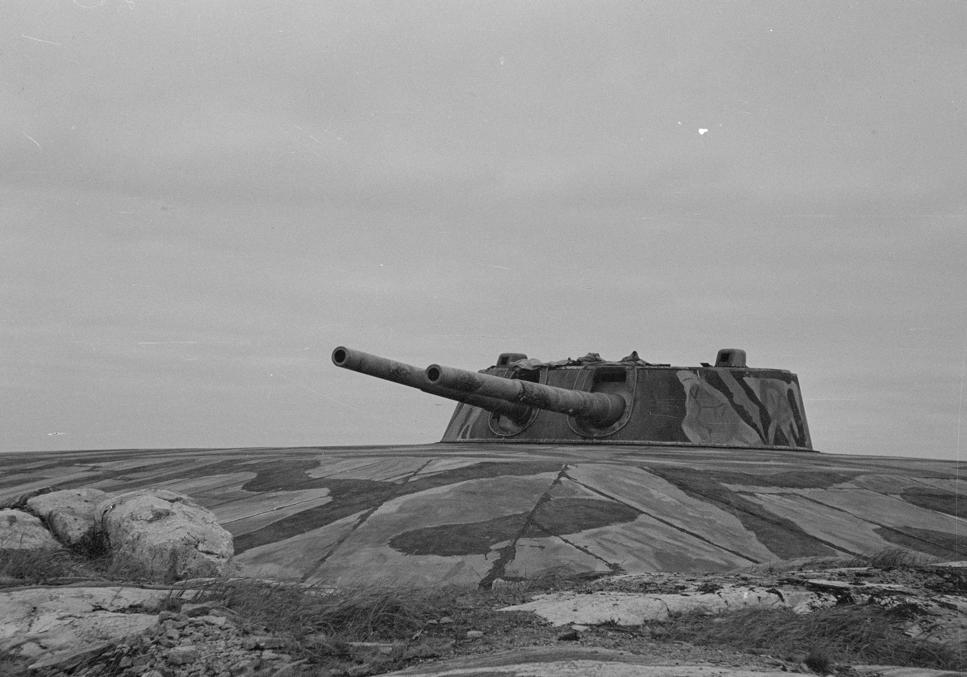
5. The USSR was in truth well aware of these plans (betrayed to them by Vilho Pentikäinen, a Finnish staff officer and a spy for the Soviets) and very, very much worried about those — which in all likelihood at least in part caused the events of 1939. In September the USSR pressured Estonia into signing a "mutual assistance treaty", ending right there the possibility of the Finnish-Estonian Gulf of Finland closure and paving the way for the annexation of Estonia in June 1940.
And in November the grossly disproportionate Winter War between the USSR and Finland began, when the negotiations about possible territorial exchanges failed. To these days the question "what if the USSR and Finland actually found a compromise" remains very much disputed and open to interpretation, with a popular point of view (especially in Finland of course) that then Finland would have been quickly taken over like the Baltic states were. There are also very compelling arguments that the situation was not really similar to the Baltic states and the USSR — Stalin, more precisely — was brutal and likely misguided, but ultimately led by practical concerns instead of sheer megalomania. In any case if we examine the Soviet demands and the negotiation process, we can discover that in fact the sides were not all that far from an agreement, but the question of Hanko was absolutely a showstopper. The USSR wanted a naval base at Hanko, a peninsula like Porkkala, only bigger and significantly farther to the west. The base would have been complemented with batteries on the side of the subdued Estonia — and the USSR would have got its own possibility to lock down the Gulf of Finland and protect Leningrad. The Soviet side did not budge on this demand, but for Finland it was pretty obviously a deal breaker; Finland was not at all willing to have its shipping in the Gulf of Finland effectively controlled by the USSR, and neither it wanted to have "a pistol aimed at the heart of Finland" in Hanko, just 120 km west of Helsinki.
As we know, Finland put up a valiant fight in the Winter War, but in the end was defeated and the USSR got what it wanted, in particular, a base at Hanko; the area was forcibly rented out to the USSR for 30 years, and all its Finnish population (including the town of Hanko itself) was evacuated and temporarily resettled elsewhere in Finland. At the breakout of the Soviet-German war in June 1941, where Nazi Germany was aided by Finland, the Hanko base was immediately besieged and did not really help the USSR in any significant way. The only link to the base was by sea, and the battery at Mäkiluoto, nearly impossible to avoid, harassed Soviet ships greatly. The Hanko base was evacuated in December 1941 (with a great loss of life as a big evacuation ship, Josef Stalin, hit multiple mines). The Gulf of Finland was closed off by Finland and Germany, with multiple minefields locking Soviet Baltic fleet near Leningrad.
We all know how this war ended too. In September 1944, while the war with Germany was still ongoing, the USSR agreed to a ceasefire with Finland after breaking through its defenses and being barely stopped more or less at the border of 1940. The rematch didn't happen. Finland was mostly back to the conditions of the peace of 1940. But the USSR didn't want Hanko back anymore. This time it wanted Mäkiluoto — and all of Porkkala — and most of Kirkkonummi.
The "Porkkala parenthesis" began.
6. In the USSR/Russia the leased naval base has always been known as Porkkala Udd. I don't know why exactly (secrecy reasons?); Porkkala udd or Porkkalanniemi peninsula was only a small part of the leased area, and Porkkalanniemi proper wasn't particularly actively used. In Finland the area was known simply as "Porkkala leased area" (Porkkalan vuokra-alue).
The leased area was 380.5 sq. km large. It included about 2/3 of the Kirkkonummi area, including the central village and everything south of it, with Porkkalanniemi and Upinniemi. In Siuntio municipality farther to the west it included 1/3 of the area, including the railway station (the modern municipal center) and coastal areas of Degerö and Kopparnäs. The small municipality of Degerby was subsumed nearly completely, so it was legally dissolved (and never reestablished afterwards), with its remains joined to Ingå (Inkoo). Small areas from Espoo in the east (islands only) and Ingå in the west were also included.
On Finnish maps of the time the area was completely blanked out. Pictured is a page from the atlas of Finland of 1950 (a complete copy of which was re-released by Karttakeskus publisher in 2014).
7. According to the conditions of the ceasefire signed 19.9.1944 (and eventually reaffirmed with the Paris peace treaty of 1947), the area was to be leased to the USSR, effective immediately, with a 50 year lease period (which in practice was assumed by the Finnish side to mean "forever"). The USSR was to pay 5 million Finnish markkas per year of the lease. This was a relatively minor amount of money; for comparison, the total amount of war reparations paid eventually by Finland to the USSR in full (in shape of various industrial production) was 170 billion in Finnish markkas.
All population of Porkkala was to be evacuated in ten days, and the area was to be ceded to the USSR. Those were the same conditions as at the Karelian Isthmus and other permanently lost Finnish areas. The population was allowed to take their property as they see fit. There were no special rules about military property, thus Mäkiluoto garrison was also able to dismantle and evacuate its 203 mm guns, although the 305 mm turret, rather badly worn during the war anyway, was left in place.
About 7200 people had lived in the leased area, which had been completely rural at the time. In total 70% of the Kirkkonummi population lost their homes. The evacuation was of course a bitter surprise for everyone, and ten days were really not much. 2200 train cars of cattle and other property and 800 more truck loads were taken away from the area. People moved their property also by horse and by boat. Many attempted to harvest from their fields as much as they could in the remaining time.
Same evacuation and resettlement policies applied to Porkkala people as to other evacuees, and of course compared to the population of the Karelian Isthmus and Ladoga Karelia Porkkala citizens were a pretty small stream of people. The only distinguishing trait about them was that they, unlike all other evacuees, were almost entirely Swedish-speaking. The evacuees received from the Finnish state compensation for their lost land and property, based upon the so-called second Compensation Act (toinen korvauslaki), and were also free to build new houses and establish new farms on the land acquired under the Land Procurement Act (maanhankintalaki). Both of these laws were approved by the parliament in May 1945, replacing earlier similar laws that were approved after the Winter War. The Land Procurement Act in particular became the greatest land reform in the history of Finland, as it applied not only to evacuees but also to war veterans and relatives of those killed or missing in action, 250,000 people in total. They were all allowed to buy new plots of land (using compensations they had received, which was mostly in form of special obligations for that purpose) from areas procured from the state, municipalities and large private landowners. Forced buyout of private land under this law effectively ended the era of vast manor lands.
The Land Procurement Act did not apply to evacuee workers and other urban population; those received compensations for lost property too but generally were expected to start new lives by themselves, although of course their immediate housing needs were temporarily met (in some cases using housing rationing regulations which in large cities, especially Helsinki, meant that apartment owners could be forced to take tenants, and even tenants could be forced to sub-rent). This of course resulted in a great housing deficit in cities, especially Helsinki, which was eventually relieved with public financing of mass housing construction. Porkkala evacuees however were pretty much exclusively smallish farmers and received new land mostly from the neighboring municipalities under the Land Procurement Act without much issue. The law specifically stipulated that the local Finnish/Swedish speakers ratio should not be significantly changed due to resettlement, and since virtually all other evacuees were Finnish-speaking, they were resettled in Finnish-speaking municipalities. Landowners in Swedish-speaking areas were nonetheless forced to pay a monetary compensation (so that they would not get into a privileged position compared to Finnish-speaking landowners who were forced to sell their land), and the Porkkala resettlement was the only exception to that.
8. After the locals left and the joint Finnish-Soviet commission quickly finished border demarcation, the area became off limits to all Finns. The border was guarded as strictly as any state border, if not stricter. There were border guard units both on the Finnish and on the Soviet side.
What happened in the leased area from there on was mostly a mystery to the Finns. Mäkiluoto was still the most important piece of the fortifications, but the Soviets made no attempts to fortify its further and just used the guns remaning from the Finns. The fact that these guns could not only shut the Gulf of Finland but also directly shell Helsinki, if necessary, probably brought considerable peace of mind to the Soviets. Thankfully it never actually came to that.
But a lot happened also to the mainland. At Upinniemi peninsula the Soviets built a full-fledged naval base, at a good natural harbor on its western coast. A smaller harbor was built a bit farther to the north at Båtvik bay. At Friggesby village at Porkkalanniemi there was an airfield, where MiG-15 fighters eventually got stationed. There were tanks and small coastal batteries. In total as much as 30,000 people were stationed at Porkkala Udd base at a single time, of which 10,000 were civilians. The civilian and administrative center of the area was in Kirkkonummi central village. There was a school and a hospital and even a cinema — which in fact was located in the old medieval church. Thankfully the church interior had been evacuated by the Finns in time (and the smaller wooden Haapajärvi church in northern Kirkkonummi was temporarily serving as the parish church for what remained of Kirkkonummi).
9. The Porkkala lease caused some practical difficulties also for the rest of Finland. Two transport arteries, the Coast Railroad and the Main Road 51, became severed.
The Coast Railroad the USSR used for its own purposes, for supplying the Porkkala Udd base. The Soviet-Finnish peace treaty obliged Finland, among other things, to give free passage through its territory for trains headed to Porkkala Udd. Interestingly enough, these trains were run with Soviet locomotives all the way through Finland; just a Finnish "pilot", knowledgeable about local railroads, was taken on board. Kauklahti station in Espoo was a border one and the "pilot" was left there. West of the leased area the border station was Täkter (Tähtelä) in Ingå, not existing anymore.
Since the railroad in Kirkkonummi did not actually go to the main naval base area, the USSR at some point built a branch line, a 5.3 km long Båtvik railroad, branching from Käla station (Kela, also not existing anymore). As the name suggests, the line led to Båtvik harbor. After Porkkala was returned to Finland freight traffic on that line continued until 2002, and the line was dismantled in 2006. Up until the end the original rails with brands of a Soviet factory still were used there.
Finland kept suburban rail traffic on the remaining dead ends of the line, and had to reroute long-distance traffic between Helsinki and Turku (and Hanko) through Hyvinkää, using the Hyvinkää-Hanko line which intersects with the Coast Railroad at Karis (Karjaa). This is in fact the scheme still used for freight traffic today. For passenger traffic however the route was very slow, and in 1947 the USSR agreed to let Finnish passenger trains pass directly through the leased area without stopping.
The resulting curious arrangement remains one of the best known facts about the Porkkala parenthesis period. Up to three trains per direction per day were allowed to pass, with Soviet locomotives only, which picked up and left Finnish trains at Kauklahti and Täkter. Soviet troops shut train windows from the outside with metal blinds, and accompanied the passengers within cars. The arrangement was jokingly known as "the longest train tunnel in the world". (At about 40 km it indeed would have been the longest at the time, although by now longer actual tunnels exist.) It became a local sight sufficiently well known that people even came to Finland from abroad specifically to travel "through the tunnel" and look at a few pieces and people of the Soviet Union, a country mostly completely shut from the outside world. The Soviet troops were also specifically chosed as "politically reliable", with stern but friendly disposition, preferably decorated war veterans. Despite the "political reliability", according to some accounts some border trade between Kauklahti residents and Soviet troops in fact was taking place.
Locomotive changes and the window stuff of course still made trains significantly (about an hour) slower, but this was still a win over the Hyvinkää route. The USSR demanded 50 American dollars for the passage of every train. This was far lower than the actual expenses incurred, so the whole thing was overall meant as a minor show of goodwill towards Finland.
Severing of the Main Road 51 was not nearly as important; the road network of Finland was at the time pretty undeveloped and of far lesser importance than railroads and waterways. At the time Road 51 in Kirkkonummi was still mostly following the medieval King's Road. The road was simply re-signposted to a more northern route via Lappböle (Lapinkylä) which didn't really differ in quality from the Kirkkonummi road. After the return of Porkkala the number 51 was returned back to the Kirkkonummi road (completely rebuilt since, nowadays a motorway between Helsinki and Kirkkonummi center), and the Lappböle road is now the Road 1130.
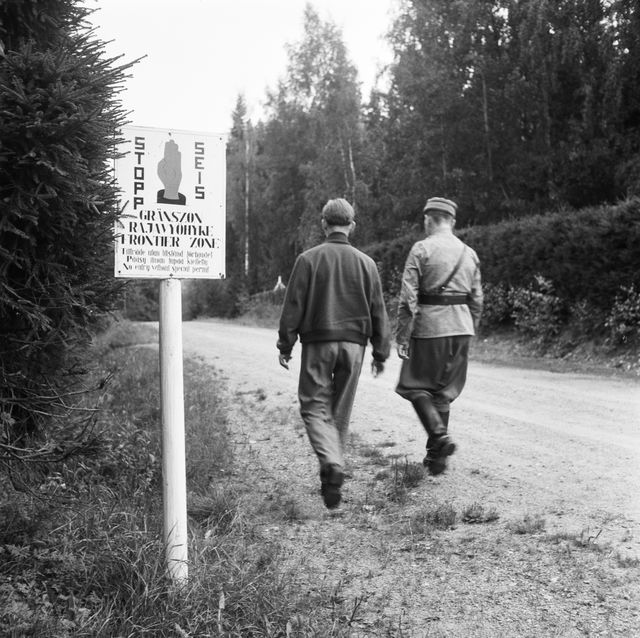
10. Border violations were not unheard of, at least from the Finnish side. They could result from accidents, carelessness or sometimes deliberate interest. While the land border was clearly marked with a 1 km restricted zone, and Finnish trespassers were normally caught by Finnish border guards, it was much easier to violate the marine border. A wide strip of Finnish territorial waters was also leased on the same conditions as land, and Finnish vessels normally were not allowed there and, if they wanted to sail for example between Helsinki and Ingå, had to make a rather wide detour. For some local fishermen the rules were somewhat relaxed; they were issued individual permits and had to draw the permit number on their boat in large digits. Still especially small boats could for example in poor weather easily end up there where they were not supposed to be.
For most trespassers there were not any especially bad consequences. Normally they were arrested and questioned by the Soviets, and released at the official border crossing a day or a few days later. There were however some outlying cases, where Finnish citizens actually ended up moved to Leningrad for questioning and ended up in Soviet prisons or prison camps with sentences up to at least 3 years. Moreover after finishing their sentences they were supposed to stay in the USSR, getting there just regular menial jobs. The repatriation in such cases had to involve a Finnish diplomatic intervention. Finland did attempt to do that, sometimes at very high (up to prime minister) levels, but at the same time had to be itself extremely cautious. It was the "dangerous years" (vaaran vuodet) post-war time, and Finland, already in a greatly disadvantageous position, always went to great lengths to avoid provoking the USSR further.
Such a case which recently got some interest was for example the case of Tage Söderström and Nils Randell, boys from Helsinki only 17 and 16 years old, who, having had some previous sailing experience, in 1946 attempted to sail to Stockholm via Turku on a small sailboat of the Söderström family. I don't really know much about sailing and have no idea how realistic such a plan was. They were aware of Porkkala of course and tried to bypass it in a wide arc, but apparently not wide enough; they were caught by a Soviet border guard boat. They ended up questioned for three weeks at Porkkala Udd base, then moved to Leningrad where they spent three months at Kresty prison, and finally were convicted of espionage, got three year sentences each, and were split and sent to prison work camps in the Far East. They fulfilled their sentences and in 1949 ended up in Krasnodar in South Russia. From there they were finally permitted to return to Finland only in 1953, after much correspondence between them (and their parents in Finland) and the Finnish embassy in the USSR. Randell's health was permanently damaged in the prison camp and he died young, but Söderström lived a long life, in 2005 published a book about his experience, Med segelbåt till Sibirien (Swed. On a sailboat to Siberia; Söderström's native language was Swedish, and the book did not get any translations from Swedish), and in 2015 was interviewed for Helsingin Sanomat newspaper.
Cases of Finnish citizens crossing into USSR and being arrested and stuck there are known from elsewhere, the first being case of Niilo Koljonen, who crossed the land border at Tohmajärvi in North Karelia for fun in 1945, also got three years for espionage, and was able to return to Finland in 1950. As of 1950, Moscow Finnish embassy was aware of 21 ongoing cases. Cases specifically from Porkkala with such heavy consequences were very rare, but Söderström and Randell's case was at least not the only one.
I could not find online anything about Soviets crossing into Finnish territory at Porkkala. Probably such cases did happen. Finland had a blanket policy of returning all Soviets, whether they attempted to claim being refugees or not. I'm at least aware of a fictional case; I'm rather fond of detective novels about Maria Kallio by Leena Lehtolainen, and in the 8th novel, as revealed in the end (spoiler warning), the murder case was related to a case of a Soviet young border guard falling in love with a Finnish girl, who was able to see him at the border. When the lease ended and the Soviets were moving away, he, at her suggestion, staged his drowning at the lake of Humaljärvi (the only place where the leased area border ran through a lake) while actually swimming across, was entered by girl's priest relative into population books as born far away in Kokkola, married the girl and moved with her to Stockholm, learned Swedish, eventually returned to the former leased area lands, and grew old with his wife. The murder case in question was his wife killing a journalist who accidentally came across their story and threatened to reveal that the man had been an illegal immigrant for over 50 years. I cannot really tell how plausible various individual elements of such a story are, but everything taken together does seem vanishingly unlikely.
11. Porkkala Udd base never (thankfully!) was used for any actual military actions. From what we know overall of the Soviet life there, it was very boring and downright depressing, during to the small size and severe isolation of the base. An assignment to Porkkala Udd was considered somewhat of a punishment. The natural beauty of the land was the only thing that made it more tolerable.
Nonetheless people lived here, and not just carried out their services, people fell in love and had children and got sick and in general had just ordinary lives. Many people still live today in Russia who spent their childhood years at Porkkala.
12. People also died, too. From what I understood there were multiple tiny Soviet graveyards in various parts of the leased area. Already after Porkkala was returned, in 1958, all these graves were moved to one place, to Kolsarby (Kolsari) a bit southwest of Kirkkonummi town. New gravestones in common style were put up along with the overall memorial.
13. The graveyard is now in a bit secluded place (and, curiously enough, not actually signposted from the nearest road), but is still well-maintained. Apparently Russian embassy in Helsinki puts down a wreath here on every Victory Day (May 9 in Russia).
14. A list of graves of this graveyard is actually available online: at this website enter "Kirkkonummi" into "Paikkakunta" field and click "Hae".
15. There is also a much newer-looking monument to Soviet submarines sunk in Finnish waters.
16. But overall, this is a very quiet place.
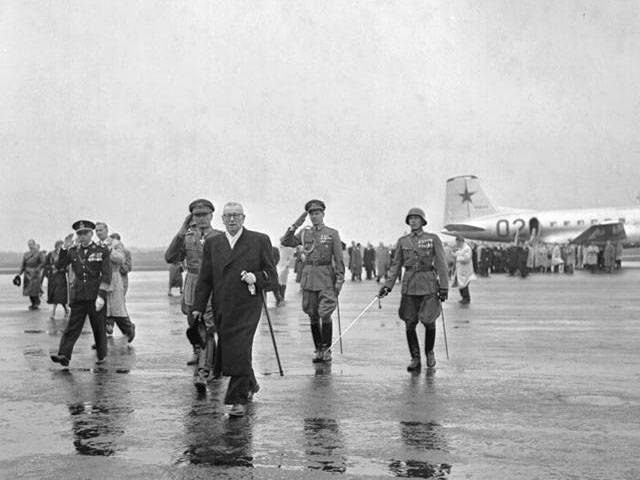
17. Returning back to the past, 18.9.1955, news shook Finland: they're getting Porkkala back!
The postwar president of Finland, Juho Kusti Paasikivi (1870-1956), serving from 1946 to 1956, went to great lengths in building a workable relationship with the Soviet Union. Stark was the fear in the postwar "dangerous years" that the USSR could still swallow Finland entirely or make it its puppet state, yet Paasikivi's presidency successfully defused that tension. An old politician, he was a member of parliament for the first time even before Finnish independence, he headed negotiations with the USSR in 1920 (successful, when the Tartu peace was born) and in 1939 (unsuccessful, when the Winter War started), and a prime minister thrice. The immediate postwar Finnish president in 1944-1946 was Marshal Mannerheim itself, the famed war leader of the country; but despite his immense popularity, he was no true politician, and was furthermore already very old and sick at the time. In practice he was little more than a figurehead, leaving the actual rule to his prime minister Paasikivi, and resigned in less than two years, leaving his post to Paasikivi. Subsequently in 1950 Paasikivi was easily reelected, in the first regular president elections since 1937. He finished his term normally in 1956, but died of a heart attack later the same year.
"I've made seven visits to Moscow and for the first time I'm coming back satisfied", famously declared Paasikivi, having returned from Moscow in September 1955. The agreed upon return of Porkkala was the most obvious achievement, but it also underscored the Agreement of Friendship, Cooperation, and Mutual Assistance being prolonged for 20 years. The agreement, in Finland known as YYA-sopimus (sopimus ystävyydestä, yhteistoiminnasta ja keskinäisestä avunannosta), was first signed between Finland and the USSR in 1948, also with Paasikivi in the instrumental role. It formed the basis of the post-war Finnish-Soviet relationships and ultimately remained in force until 1992, all the way until after the fall of the Soviet Union. The treaty was basically a military one, but not a full alliance; Finland and USSR were to defend itself and aid each other against "Germany and allies" (meaning NATO), but such aid was not unconditional but would have been rendered after separate consultations. Finland thus was bound to the USSR but, unlike the Warshaw Pact countries, was not its full ally. Such a compromise was the result of Paasikivi's work — even though, of course, many in Finland thought that even such a treaty is inherently disgraceful. The treaty was originally signed for 10 years, and now in 1955 it was being prolonged for the first time.
The decision about the return is generally assumed to be made by Nikita Hrustschov, the then new leader of the Soviet Union. He wrote later: "I believed that having a military base like a knife at a throat is not the best way to win the trust of the Finnish people... How can we demand that the Americans remove their troops from other territories, if we themselves have a base in Finland? It serves a similar role that the American bases do for example in Turkey." The propaganda value and the gesture of making a gift to kinda-sorta-allied Finland were good reasons for returning Porkkala in themselves, but mostly the base just didn't have all that much value to the USSR anymore. With the development of nuclear weapons, the ability to shut off the Gulf of Finland with conventional weaponry just was not all that valuable. Meanwhile the maintenance of the isolated base was expensive and more investments into it (such as building a new battery at Mäkiluoto) would have been even more so. And Finland was far friendlier than it had been in the 1930s. It was easy for the USSR to be generous.
"The pen has mended what the sword had broken", said Paasikivi in a radio speech a few days later.
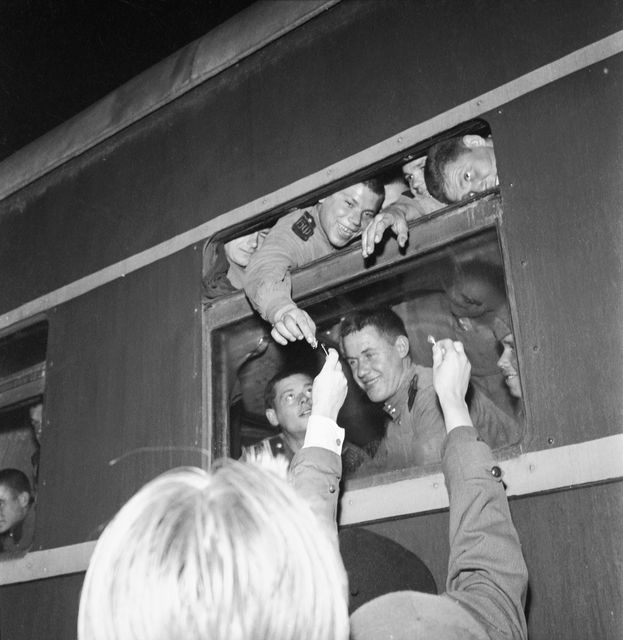
18. The return of Porkkala was not at all a fast or easy thing. First of all it took months for the Soviets to remove all property and personnel. Military property that could not be easily removed was generally destroyed. For example, all Mäkiluoto turrets were blown up.
Since 21.12.1955 Finnish trains were allowed to pass through the leased area with windows open. On 26.1.1956 the final documents confirming Porkkala return were signed between Finland and Russia, and the border to the emptied Porkkala opened up. At first Finland allowed in only its military and officials. Former residents were allowed to visit since 4.2.1956.
This short amateur 8 mm movie, mute and 9:20 long, published by the Finnish Heritage Agency, shows what Porkkala area looked like immediately after its return. Note for example Soviet-built buildings at about 3:25.
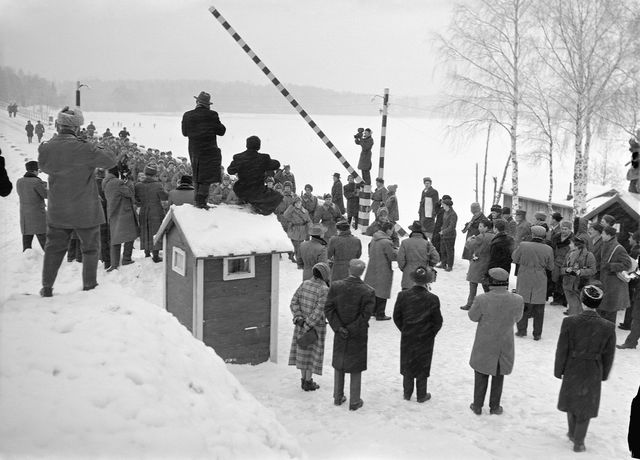
19. It was however not at all clear at first if the residents actually still had the right to their old houses. The question of the ownership of Porkkala land was raised immediately with the first news of Porkkala return in September. The former residents had by this point pretty much all received compensation from Finland and resettled under the Land Procurement Act. So did that in practice mean they forfeited the ownership of their old land, and it by now belonged to the Finnish state? The former residents obviously argued no, but there were strong voices disagreeing with that, including, perhaps surprisingly, the Social Democractic Party leadership.
And Finland certainly could have found a use at least for some of this land. Finnish military was quite enthusiastic about the opportunity to simply establish their own base in place of the old Soviet one, possibly reusing whatever there was left in usable state. It wasn't really a matter of particular greed; Finnish navy was at that point genuinely rather cramped at their base at Katajanokka and Suomenlinna in Helsinki center. Finnish military presented in March a plan of vast Porkkala land requisitions.
Those who argued that the old residents still had a right to their old homes (apart from residents themselves, this was a point of view very vocally supported by the Swedish People Party in the government, because, as we mentioned, those residents were nearly all Swedish-speaking) generally did not dispute that in that case the formerly received compensation would need to be paid back to the state — or otherwise how is it fair that some citizens effectively got a second house for free? However it was not also clear how exactly to calculate the amount of this payback, since Finnish markka devalued greatly in post-war years, and the amount of compensation originally paid would now be many times below the true value of the property. And also the true value of the property itself might well have considerably changed during the lease years.
In the end the Porkkala Return Act (Porkkalan palautuslaki) was signed on 8.6.1956, and came into force two weeks later. It mostly favored the original owners, who all (or their heirs) received the right to return to their houses. The state however reserved the right to perform a wide one-time expropriation of Porkkala lands (for a fair price, of course); the exact scope of it was still to be determined. The original compensation from the state, if any, had to be paid back, re-evaluated against the current land value and multiplied by a ratio which was still below actual inflation during the time passed. If the original owners did not want to claim their property back (and pay for it), they of course were free to do that, and the property would have returned to the state eventually. Virtually everyone wanted to return however. Presumably many if not most of them sold their new houses to be able to return to old ones. The old houses for the most part still existed, but typically required major repairs; the Soviets had used their mostly as barracks, and generally did not care too much about their maintenance. Among other things, walls could have been crudely repainted, remaining furniture damaged, etc. Apart from private homes damages, the large-scale destruction of the old graveyard by the Kirkkonummi church brought distress to the locals. Still, people were overall quite happy to return back to their ancestral homes.
The return of Porkkala was generally considered a great political win for President Paasikivi and his prime minister Urho Kaleva Kekkonen (1900-1986). Paasikivi's term was ending and he was not seeking reelection; Kekkonen was elected to his first presidential term in early 1956, and was inagurated on 1.3.1956. Porkkala return was considered to be a great factor in this election, and maybe it also didn't help that his main opponent, social democrat Fagerholm, was opposing the restoration of Porkkala property rights. Still it was a very close election, with 151-149 votes by the electors (Finland had an American-like electoral college system throughout most of its history), and the thing that is believed to decisively influence Kekkonen's win was the support from SDKL, the socialist party reinstated after the war and heavily influenced from Moscow. Moscow was happy with Kekkonen as a negotiation partner, and in the end he remained in power for a quarter of the century, through many presidential terms. Arguably he was the greatest leader of the independent Finland in its history so far, if not always quite all that democratic in his methods.
20. The final decision on the expropriations for the military was made on 9.8.1956. The areas expropriated were significantly smaller than the original demands. The military basically got the Upinniemi peninsula with its naval base and some islands, including Mäkiluoto and Rönnskär. Båtvik harbor for example was returned to civil use (and a cable factory was moved there in 1961 from Salmisaari near Helsinki center; the factory still operates as a part of Prysmian international conglomerate); Friggesby airfield was eventually completely dismantled and turned back into farmland.
Buildings constructed by the Soviets were all evaluated, but construction quality was generally found to be quite low, and most were quickly demolished. Some however remain in use to this day, mostly in the Upinniemi area itself. Otherwise the base had to be rebuilt anew.
Today Upinniemi garrison (Upinniemen varuskunta) is one of a few closed garrison towns of Finland, the only significant areas (other than strict nature reserves and the like) off-limits for general population. The unit quartered there nowadays is the Coastal Brigade (Rannikkoprikaatti), consisting of the so-called Suomenlinna Artillery Regiment (which is therefore no longer located in actual Suomenlinna), Porkkala Coastal Battalion and Naval Reconnaissance Batallion. The bridage has in total about 2000 conscripted men (and women volunteers) yearly, and about 300 permanent military and civil personnel. Also the 7th Surface Counter Squadron of the Finnish Navy is quartered at Upinniemi, with Hämeenmaa minelayer as the flagship. Hämeenmaa-class minelayers, of which there are two in total, are currently the largest ships of the Finnish Navy (although the Pohjanmaa-class corvettes coming in the 2020s would be significantly bigger).
It is in theory possible to visit garrison towns by getting a permit, but I have no idea how difficult this is in practice. For the time being I haven't been to any and thus have no pictures from Upinniemi. Some historical and modern pictures from Upinniemi, including Soviet-era buildings, can be seen in this Finnish-language work by Senaatti-kiintestöt, an unincorporated state enterprise managing most of the state-owned real estate in Finland.
Mäkiluoto coastal artillery was also rebuilt, although quite a bit of consideration was given to it, to avoid provoking the USSR again. Four 152/50 T turrets were placed on it in the end, replaced in the 1980s with 130 TK ones. The island hasn't had a permanent garrison since 2005, when all coastal artillery island forts were de-manned. Disused barracks and some other buildings were dismantled in the 2010s. The turrets however are still in service and exercises are occasionally carried out at Mäkiluoto.
21. One thing that never returned with Porkkala was a national park. The first four national parks of Finland were established shortly before the war, in 1938. One of them was located at Porkkalanniemi (occupying only a rather small area there in truth). Along with the tiny Heinäsaaret islands of Petsamo, this national park was lost after the war, and was not re-established upon Porkkala return.
Nonetheless by now the tip of Porkkalanniemi and a large part of the archipelago are protected nature areas again. Porkkalanniemi and the island of Linlo (pictured a view at Linlo) have hiking infrastructure and are quite popular with Kirkkonummi and Capital Region residents, and in recent years there has been talk about re-establishing a national park (in significantly wider borders than in the 1930s). So far no decision has been made upon the matter.
22. "Once upon a time there was a little boy, who had a carrot. (Carrot is "porkkana" in Finnish, which of course is a pun at "Porkkala") Then came a big boy who grabbed this carrot. But having bitten into it, the big boy realized that he didn't really want a carrot, because he had already eaten so many Karelian pies. And so he gave it back, saying, here's your carrot! The little boy was so happy that he still celebrated this ten years later, and remembered the big boy with great gratitude. And that's it." Indeed, this is a newspaper cartoon from 1966.
Actually after the Porkkala return there were for a while some hopes that maybe, just maybe, the Karelian pies — that is, the Karelian Isthmus and Ladoga Karelia, or the bulk of the Finnish territory lost in the war — could also be returned to Finland, at least in part. President Kekkonen categorically denied that possibility in public and suggested that why don't people dreaming about that go themselves and try to negotiate with the USSR. Apparently however he did hope for Karelia return himself a lot, and at least twice tried to indeed negotiate about it. In 1963 Finland leased from the USSR the Saimaa Canal and a thin strip of land along it; the canal, connecting Saimaa lake system with the sea, was left partially on Soviet territory after the war and for almost two decades had been out of use. The canal lease arrangemnet is still in force today. Kekkonen hoped instead to get Vyborg and the territory west of the canal (a relatively small area) back but, well, this did not happen.
The whole 1944-1956 period was came to known as Porkkala parenthesis (Porkkalan parenteesi) — the area was just temporarily kind of shut out of Finland history, as if taken in parentheses.
23. Not many traces of the "parenthesis" can be found in the former leased area nowadays, especially if you don't know where to look. None of the Soviet-era buildings and structures have any protected status even now, although you'd think this would be an interesting piece of heritage not found anywhere else in the country. There are some abandoned dugouts and the like, scattered in the woods and the fields, and a few buildings, private-owned and mostly completely unremarkable. Pictured for example a former desinfection and laundry building near the railroad in modern Laajakallio residential area; these days occupied by a small car repair shop.
An inventory of the remaining Soviet-era structures has been made by enthusiasts and is avalable as this custom Google Map.
24. Sometimes the traces are quite subtle, like cobblestones showing at the shoulder of a road between Upinniemi and Porkkalanniemi, named Kabanovintie (Finn. Kabanov Road), after Sergei Kabanov, the former commander of the Porkkala Udd base. The road was built by the Soviets for tanks. An old wooden bridge on this road, Vårnäs bridge, actually had a museum bridge status but had to be demolished in 2008 due to poor condition; a regular bridge was rebuilt afterwards.
25. Many artifacts from the Soviet period and stories are collected in the Porkkala leased area museum named Igor. It is actually named after a Soviet prisoner of war who worked at a local farm in 1944, before the end of the war and the "parenthesis". The museum is not very large (although the building pictured is not the only one) but is absolutely worth visiting. Outside summer season it is open on Saturdays only.
The museum is actually located not in Kirkkonummi but in Degerby village west of it. As mentioned before, nowadays it is a part of Ingå (Inkoo) municipality. It is 45 km from Helsinki center by car to Degerby. There are some buses too; if buying a bus ticket, the stop you want is Degerby th (Inkoo). th means tiehaara (intersection), but from the intersection in question it is only a few minutes walk to the museum.
27. But for the most part, the Parenthesis is a very distant memory. Kirkkonummi is by now an outer suburb of Helsinki.
28.
29.
30.
31. And even the monument close to the Espoo-Kirkkonummi bridge is probably not seen by many either.
